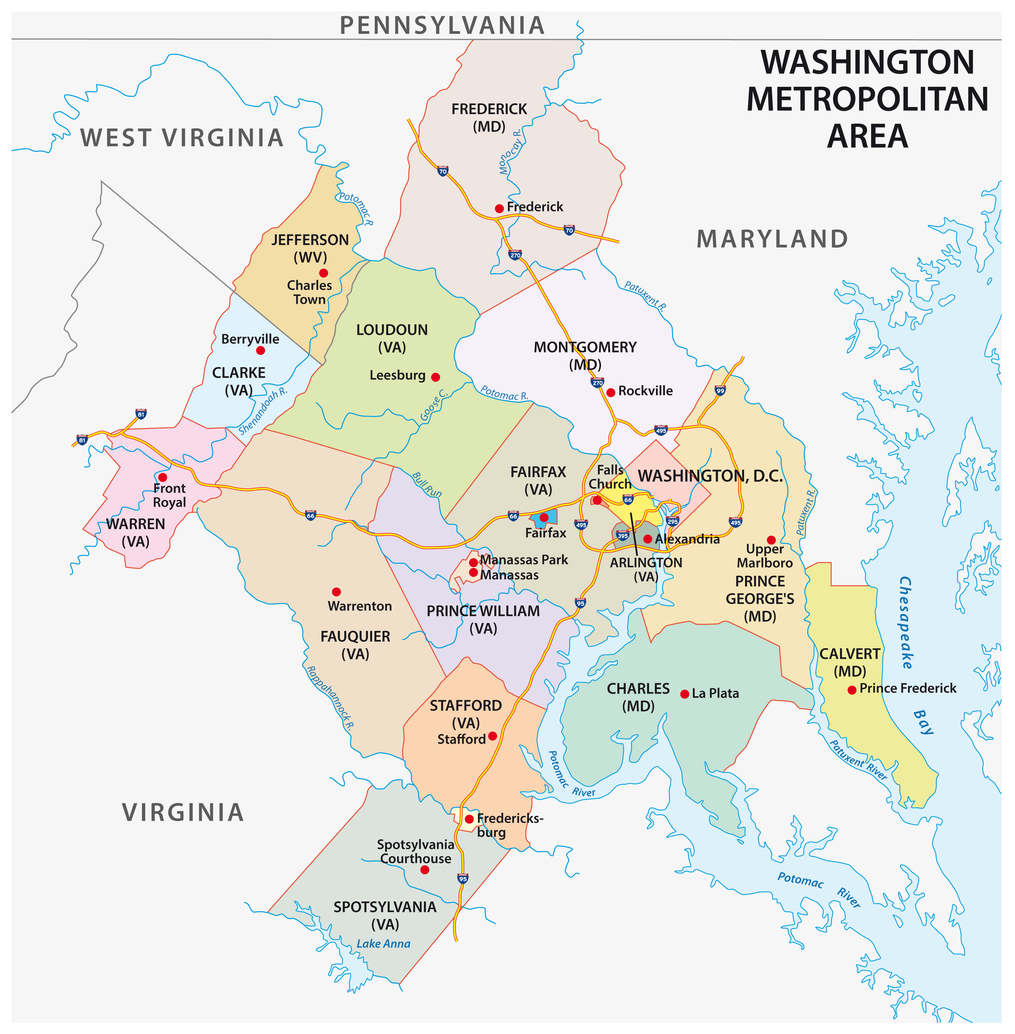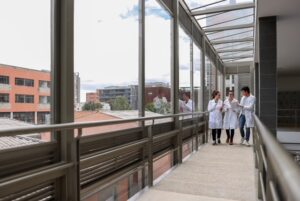What do economic developers look at when assessing the strengths and weaknesses of a jurisdiction or region? And how does that affect the location decisions made by firms? We’ll tackle these and some similar questions in this MoCo Economy Watch.
Economic development is a profession, not just a thing people do
Economic development is not just the sum of economy-related policies, projects, and practices. There are “best practices” in the field, and one place to look for those is in the professional development literature of the economic development trade.
The International Economic Development Council (IEDC) is the trade organization for economic developers and economic development organizations. In that capacity, IEDC produces reports on current trends in the field, as well as professional development education resources. I’ll summarize and pull a few relevant excerpts from that literature below.
I hope that in doing so, folks can better understand how economic development generally views topics like the business climate and tax costs, and how those views shape the site selection process in a region like greater D.C.
Best practices
In the IEDC’s resource guide to economic development marketing and attraction, IEDC identifies key local factors that economic developers should be aware of when assessing the strengths and weaknesses of communities. And those factors include a couple of important ones that are worth addressing briefly.
- Business climate
The business climate can be hard to quantify, but whether and how market actors quantify it is largely beside the point; the point is that these factors are a major element of how a community is viewed by those who make decisions about whether and where to invest. The section starts with something that sounds like it could be ripped straight from the pages of MoCo Economy Watch.
Local governments play a critical role in creating an investment-friendly environment, one in which firms can expect a reasonable rate of return on their investment. Such an environment can not only equate to more and improved employment opportunities and a stronger tax base, but these enhancements can also lead to improved services and a higher quality of life….
Let’s acknowledge a few key points about this section. First, “a reasonable rate of return” is about more than just costs or taxes, it is about the amount of revenue that can be generated and whether that revenue constitutes a rate of return on those costs that is sufficient to drive investment decisions from “no go” to “go”.
Second, the passage acknowledges the important connection between the business climate and tax revenues, government services, and quality of life. This is why I quantified the opportunity cost of Montgomery County’s lost share of jobs in high wage industries (about $37 million annually and growing). As I have previously noted that amount is roughly equivalent to the cost of a new elementary school each year, or the cost of a new fire station and the typical level of annual support that the Council provided to community non-profits through the Council grants process. So, you know, it ain’t nothin’.
The business climate section continues by addressing what I have previously referred to as “process risk.”
Many local governments have complex or difficult processes for obtaining a building permit, business license, or other permits needed to do business. Complicated, convoluted and seemingly endless bureaucratic processes can stifle entrepreneurs, limit expansion, and drive away new investors.
The D.C. area, I like to say, is a “mission-driven metropolitan area.” There are a lot of people who choose to live in the region because they fundamentally believe in government, the ability of governments to solve collective problems, and the importance of “small ‘d’ democracy.” On the other hand, many of the processes and norms in Montgomery County often feel like a counter-productive excess of democracy – that is that the will of the people is continually thwarted by providing those who opposed a change an opportunity to continue fighting that change forever.
The report identifies several factors affecting a community’s business climate, including the following: attitudes towards growth; public-private cooperation; government responsiveness; government efficiency; labor relations; and government regulations, fees, zoning patterns, and permits and permitting time. The report also cites a survey of business location decision makers who were asked to indicate reasons in favor of doing business in Texas (tax climate, labor & workforce cost and availability, and a pro-business climate). Responses to the same survey about reasons that site selectors might recommend against locating in California (too much regulation, an anti-business climate, high costs, and high taxes).
- Taxes and the cost of doing business
The IEDC report also identifies several examples of measures that can be used to understand the cost of doing business for those assessing the strengths and weaknesses of a community as an investment location. These include the following: state tax climate rankings; overall tax rates; corporate tax rates; personal property tax rates; corporate income tax rates; individual income tax rates; unemployment insurance; sales tax; gross receipts tax; worker compensation costs; and utility costs.
Notably, the list is not confined to costs for the real estate industry specifically. Rather, the identified set of costs is broad, and it includes not just impact tax rates and special taxing district rates, but also the full range of taxes and business costs as well as costs that relate to the individual employees and executives, such as the individual income tax.
These factors are also relevant to business retention and expansion programs
While it may be something that “goes without saying,” I’m going to say it anyway – the same factors that are considered by companies seeking to relocate or by site selection professionals are also relevant to companies that are already here and are either (a) looking to expand, or (b) are nearing the end of their lease.
While I won’t dwell on the point, here’s an excerpt from the IEDC professional development manual for business retention and expansion on the topic of business climate:
Are the community’s tax rates competitive with those in neighboring jurisdictions and states?
Are the state and local governments generally viewed by the business community as responsive to their needs and concerns?
Are major regulatory approvals needed for development (e.g., zoning changes) usually approved through a transparent process, or after lengthy public battles?
Suffice it to say, Montgomery County does not make a great case for itself with respect to considerations such as these.
Connecting these criteria to the site selection process
The IEDC report on marketing and attraction does briefly address the site selection process and criteria. A portion of that description may be helpful for understanding the significance of business climate, costs, and taxes.
Firms use different models or methods to compare competing areas. The weighted value of the various factors and their costs used in the comparison are a function of an individual firm’s business objectives and its perceived value of a factor. Typically, a company will screen states or regions for minimal acceptable standards, such as tax policies, unionization, worker’s or unemployment compensation practices, etc. If a company objects to the state’s tax policy, a community in that state may be disqualified regardless of its individual strengths…
The IEDC report also identifies the local factors that influence firms’ location decisions. And while those generally track the examples of measures that economic developers should use when assessing the strengths and weaknesses of a community, it is worth explicitly noting some of the identified factors that influence location decisions: business climate; image of the community; incentives; labor force cost; regulations; state and local government attitudes toward business; and taxes (sales, property, corporate, and personal).
Assessing MoCo using these criteria
Obviously, MoCo has many strengths – the highly educated and dedicated workforce is one big one, as is proximity to the nation’s capital. But those strengths aren’t new. If the market doesn’t view those strengths as outweighing the County’s weaknesses, then the County’s value proposition needs to be improved.
First, let’s just acknowledge again that the market is emphatically saying that MoCo’s value proposition is not good enough.
- Last month we reviewed some headlines from 2020 and 2021 economic data that indicate an employment base that is heading downward on a steep trajectory when viewed relative to the region.
- Also, we recently did a deeper dive on office demand, and highlighted several pieces of evidence that the issue for the County’s office market is that there really is not enough demand to justify speculative developments. We noted specifically that the employment in the County’s largest industry (and the most important one for the County’s office market) is shrinking.
- We put together an overview of 2020 personal income data in November’s Flotsam and Jetsam. In that review, we see that MoCo is trailing the other large jurisdictions in the region in almost every category of income growth.
- Earlier in 2021 we reviewed the state of the real estate industry and fixed investment in MoCo. Generally we find a real estate industry that has struggled locally, see little evidence of new investment in high value-add industries, and little investment locally in the industries that are growing nationally.
- This summer we highlighted the shocking statistics about how little of the “big tech” real estate development in the region is happening in Montgomery County, and further looked into data centers – a growing area of investment elsewhere.
- We also looked into Montgomery County’s increasingly competitive suburban Maryland neighbors. While Maryland generally is losing out to the D and the V, the competition within the M is getting tougher as well.
- As part of my June 2021 report on the state of the office economy in MoCo, we reviewed several key signs of the County’s struggles, including shrinking shares of the key industries in the region’s economy and very few of the top office leases each year. Furthermore, we recommended one possible solution that could lead to the marketplace deciding to give the County a second look – a substantial incentive program.
So having really established the struggles – mostly focusing on demand, but with the occasional foray into supply – I think it is safe to consider the topic of why there isn’t a lot of demand for MoCo office space. Among the factors affecting that demand are several that are relevant to this discussion of tax burdens (explored in more detail in November’s Flotsam and Jetsam):
- Own source revenues, the money raised locally (mostly from taxes) to be spent locally, are much higher in Maryland than in Virginia: own source revenue raised by local governments in Maryland are 12.8% higher than in Virginia, and when state and local governments are combined the number is 10.1%.
- State and local governments spend 14.1% more on current operations than their Virginia counterparts. For local governments alone, Maryland local governments spend 17.9% more on current operations largely because the per capita cost of wages and salaries for local government employees are 19.2% higher than they are across the river.
- We also noted that per the American Survey of Public Employment and Payroll, Fairfax County actually has 17.7% more full time employees than MoCo does, but Fairfax’s payroll for full time employees is actually 4.7% below that of MoCo.
- We also noted that compensation per full and part time state and local government employee in MoCo is 14.7% higher than compensation per full and part time employee of state and local government in Fairfax County.
- Furthermore, we again noted that a key distinction between Maryland and Virginia is that net taxes (taxes on production net of subsidies on production) are much higher in Maryland than they are in Virginia for some of the industries we care most about (such as the professional and business services industries).
Wrapping up
While real world causality is difficult to assess, it is probably the case that the following two factors are affecting demand:
- Key office-inclined industries face higher net taxes in Maryland.
- Overall tax burdens in Montgomery County are much higher than in nearby jurisdictions.
Tenants are not, on their own, deciding to locate in Montgomery County. And developers are not, on their own, building a lot of “spec buildings” because it is hard to justify building a building that you can’t fill with tenants. So, the question really is this: what can Montgomery County do, on its own, to address this problem in a timely manner?
The answer to that question is that the County can create an incentive program that will really change the value proposition for the kinds of tenants we need – private industry employers who pay high salaries and whose real estate footprint will provide revenues that support the County’s spending. Those local investments and employment opportunities are critical to getting MoCo back on track.
Looking at the last two years, occupied MoCo office space has declined from 65M to 62.8M square feet, a decline of 3.5%. Obviously, the last two years have been bizarre, but this impact on office occupancy is quite different in scale to what we see throughout the region. In Fairfax County, occupied office space has declined as well – from 99.5M to 98.1M square feet – though at 1.4% this represents a much smaller relative decline. For the entire metro region excluding MoCo, occupied office space has also declined – from 379.2M square feet to 371.2M square feet – but again this represents only a 2.1% decline, significantly below the 3.5% decline in MoCo. Put differently, MoCo entered 2020 with 14.5% of the total region’s office space, and yet when looking at the amount of occupied space lost in the region in 2020 and 2021, MoCo accounts for 22.2% of it. These figures generally support the notion that the impact of the pandemic has been, and may continue to be, an acceleration of pre-pandemic trends. As often noted in these pages, the pre-pandemic trendlines were…um…not good.
Over the longer term, it may be that all local governments across the globe will need to think carefully about their sources of revenue and the risk to those sources of revenue posed by the pandemic. But some firms will continue to need office space, those firms are making decisions now, and MoCo needs to do all it can to make those decisions as difficult as possible because the decisions those firms are making now are not favorable to MoCo’s economic or fiscal strength. Be well, stay safe, and shop MoCo!











